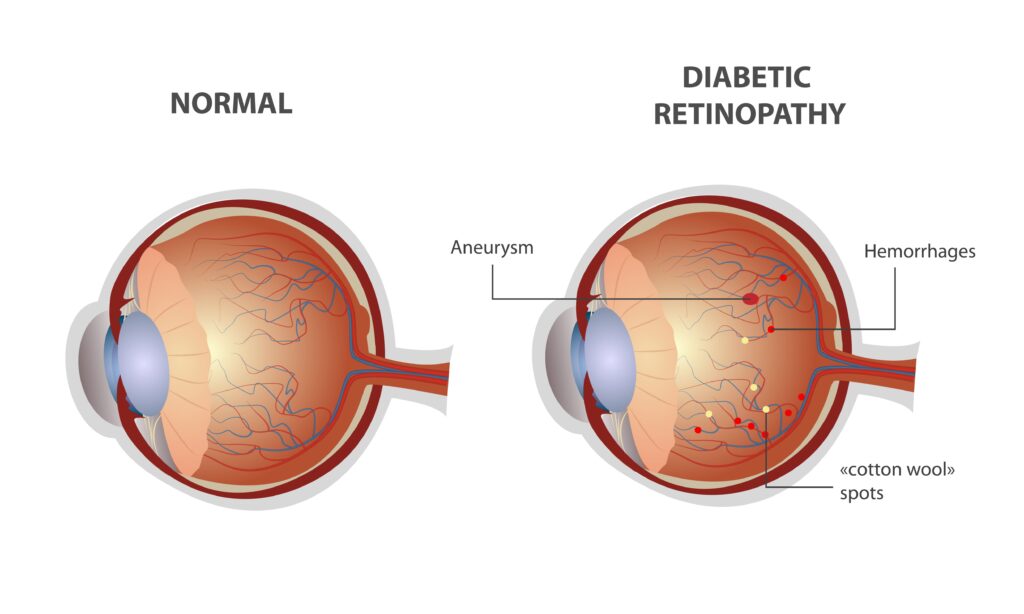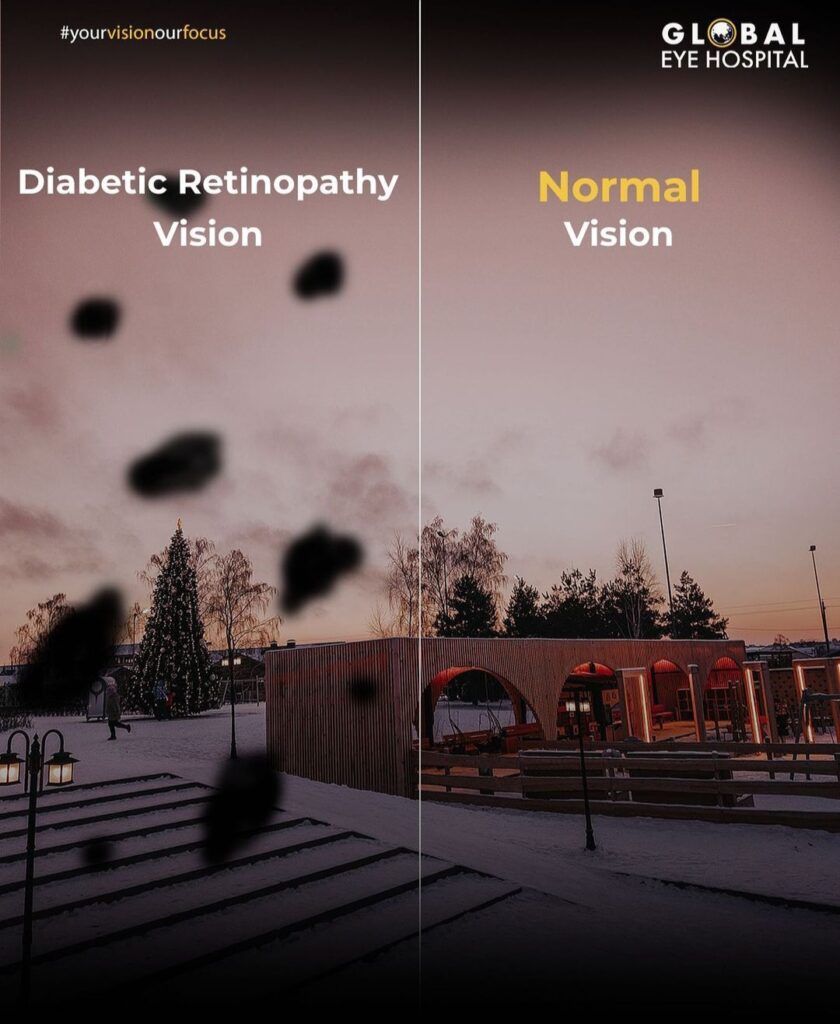What are the types of diabetic retinopathy?

Diabetic retinopathy is a condition that affects the blood vessels in the retina, which can lead to vision loss or blindness for people with diabetes. This eye complication is more common among those who have type-1 or type-2 diabetes. The longer you have diabetes, and the less controlled your blood sugar is, the greater the likelihood that you will develop diabetic retinopathy.

Symptoms of diabetic retinopathy
Early diabetic retinopathy usually progresses without any noticeable symptoms. However, some people with the condition experience changes in their vision, such as difficulty reading or seeing distant objects. These changes may come and go.
If the eye condition progresses, the blood vessels in the retina may start to bleed into the vitreous. This can cause dark spots or streaks that look like cobwebs. If the condition is not treated, scars can form in the back of the eye. The blood vessels may also start to bleed again, or the bleeding may worsen.

Risk factors for diabetic retinopathy
Some of the main risk factors which result in the diagnosis of diabetic retinopathy,
- Diabetes is a serious condition that can lead to diabetic retinopathy, especially if it’s not well-controlled. The risk of developing diabetic retinopathy increases the longer someone has been diagnosed with diabetes.
- If you are diagnosed with other medical conditions such as high blood pressure or high cholesterol, you are at a greater risk of developing diabetic retinopathy.
- Pregnancy can be a high-risk time for developing diabetes, and diabetic retinopathy, a woman who develops gestational diabetes during pregnancy, is more likely to develop diabetes later in life, which can lead to diabetic retinopathy.

Types of diabetic retinopathy
There are two types of diabetic retinopathy:
1. Proliferative diabetic retinopathy
2. Non-proliferative diabetic retinopathy
- Non-proliferative diabetic retinopathy (NPDR) is the earliest stage of the disease, and symptoms are mild or nonexistent at this point. In NPDR, blood vessels in the retina become weakened. Tiny bulges called microaneurysms may form in the blood vessels and leak fluid into the retina. Swelling of the macula can occur as a result.
- Proliferative diabetic retinopathy (PDR) is an advanced form of an eye condition. When the retina is deprived of oxygen due to circulation problems, new and fragile blood vessels begin to grow into the vitreous and the retina. These newly formed blood vessels are more susceptible to leaks, which can cause one’s vision to become blurry or cloudy.

Treatment for diabetic retinopathy
If you have diabetic retinopathy, you must get regular eye exams so your doctor can monitor your condition. You may only need an exam every few months in the early stages. But if your condition progresses, you may need to be examined more often. Treatment is important to prevent further vision loss. While it can’t reverse any damage that has already occurred, it can stop the condition from getting worse. In addition to treatment, it’s important to control your diabetes, blood pressure, and cholesterol levels. The treatments include,
- Injections of anti-VEGF drugs can help to slow the progression or reverse diabetic retinopathy. Corticosteroid medications may also be recommended by your doctor to help with this condition.
- Laser treatments can help reduce inflammation and swelling in your retina by removing the blood vessels causing the problem. Your eye doctor can use a laser to target the affected area and make the vessels shrink, so they no longer leak. This will give you some relief from the symptoms of retina swelling and help to improve your vision.
- If the case is severe and treatment doesn’t work anymore, then a vitrectomy is a type of surgery that your eye doctor may recommend if you have a lot of bleeding in your retina or a lot of scars in your eye.
Conclusion
Although you can’t always prevent diabetic retinopathy, there are measures you can take to help reduce your risk of developing the condition or experiencing severe vision loss. These include having regular eye exams, maintaining good blood sugar and blood pressure control, and seeking early intervention for any vision problems.
Are you experiencing symptoms of diabetic retinopathy?
It’s better to get tested and know the status of your condition from one of the most reputed eye care hospitals in Hyderabad. At Global Eye Hospital, we are well-equipped and experienced in offering all treatment options for diabetic retinopathy.
Book your appointment now for all eye-related services.
The Global Eye Hospital
Your Vision Our Focus


